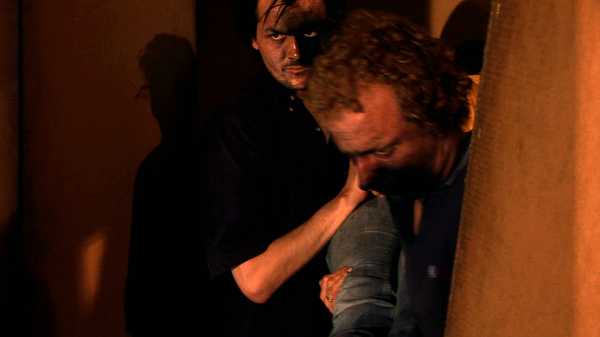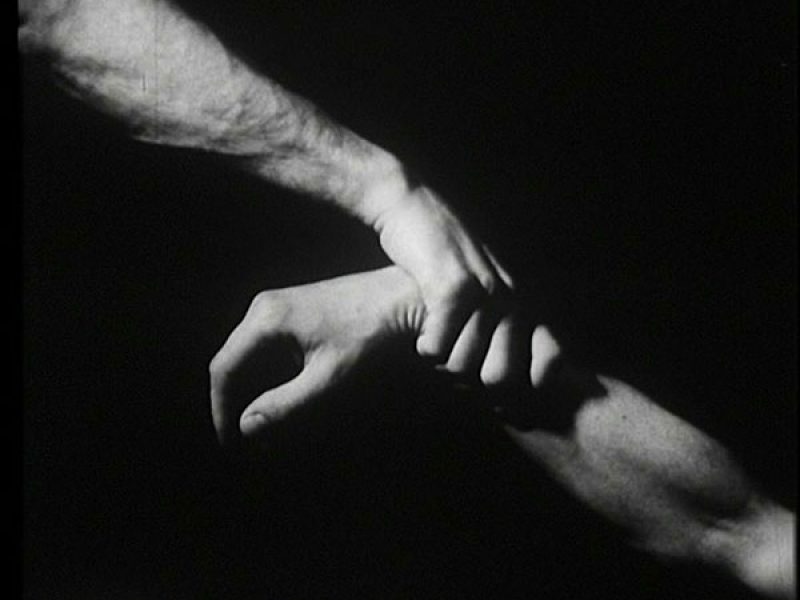Gail Pickering is an artist in the business of transformation. Her transformations often trace twentieth century socio-cultural movements from their exuberant beginnings to their soft, slow quietus. And hers is also the return journey back again, where this passage is remedied and rescued, reconstituted and made to live again. Through performance, film and video, her works seesaw between the soaring highs of nascent political ambition and their roughly hewn dissent to failure. Transformations appear in many aspects of the works, the histories that she absorbs, one into the other, to the material transfigurations and narrative diversions in her objects, sets and scripts, to the transformation from gestures to attitude played out by her astutely cast ensembles to the fluid transitions she makes in the media she chooses to frame them; from the three dimensional recesses of the theatre or exhibition space to the flattened span of the video screen.
Her work has quite consistently taken site as physical starting point for a work, from which a chain of lateral conceptual associations are gathered to cross-pollinate in work that is always stylistically her own. Take ‘Hungary! And Other Economies’ (2006-7) as an early example. The video (and one time performance) was originally shot in the Chateau de Sade, just outside Marseilles. Here Pickering employed four porn actors to read and improvise from selected excerpts of a play by German writer and artist Peter Weiss, called ‘Marat/Sade’ (1963). Weiss’ original play incorporated the techniques of epic theatre to explore ideas of liberation – and whether social responsibility was personal or collective – through the fictive encounter of French political reformer and revolutionary, Jean-Paul Marat (1743-93), with the infamous French aristocrat, philosopher and libertine Marquis de Sade (1740 – 1814). Pickering’s updated and improvised version was set in de Sade’s former home, now occupied by Italian fashion designer Pierre Cardin (b. 1922). Cardin’s coincidental presence is stitched into the fabric of the work through stylised costumes bearing his distinctive geometric motifs and the sharp outlines of his retro-futuristic garb, mocked up in cardboard and affixed to the actors’ plain, tight-fitting body suits. That they are temporary costumes made for a day-long ‘performance’ rather than lasting fashion item is perfectly clear. And the viewing experience seems to mirror that of the improvising actors as they find their way through the script, flipping between self-awareness to amusement and then confusion to apathy. And as the camera lens traces the path around the Chateau’s architectural debris, their attention spans wane and the performance is abandoned. Here several histories are combined and repeated, brought forward through these fit and virile bodies, themselves sites of accumulation.
Throughout her works, her sets and costumes reproduce the accessories of infamous revolutionaries in assimilations that are both knowingly slipshod and oddly sophisticated. For ‘Dissident Sunset’ (2007), the set, costume and dialogue was inspired by archive photographs of two independent historical events; German artist Kurt Schwitters’ iconic cubist architectural installation Merzbau (which, as the story goes, Schwitters hid his contemporaries; dissidents and criminals), and documentation of the gatherings of Amercian student group The Weathermen who made a series of protests and violent attacks on in the early 1970s in reaction to the mass violence in the Vietnam War. Once, they mistakenly detonated a bomb in the basement of their New York headquarters, and Pickering’s casts’ blackened faces reflect this charred-up event, as well as insinuating the guerrilla warfare against which the students were rallying. The set is made up of interlaced triangular boards, dark but dimly lit so as to highlight the sharp diagonal of their outlines. Although its rudimentary fabrication is so obvious as to be dumb, the sparse brutality of its form references both historical sites but also imprisons the ensemble. Pickering’s cast of non-actors bring their own physical experiences – from nomadic world travelling to competitive hula-hooping – to their performances and as their awkward conversations and synchronised gestures break into a series of isolated physical convulsions, the jagged diagonals of the set emphasises the unforgiving claustrophobia of their collective breakdown.
Pickering encourages the personal improvisation of her cast within a rigorous set of directives, influenced by Bertold Brecht’s strategy of ‘gestues’ where attitudes are made to be acted out physically and in and through them, to reveal broader social conventions. In Pickering’s case this transformation – from attitude to physical form – is always clear but it also extends to all aspects of production. Her soundtracks are often percussive, beats bound from drums or synthesisers or from the repeated stamping of feet or prop against floor or wall. The beat usually chimes with the set’s architecture or elements of the narrative but also, consistently and reflexively, dictates the works’ overall structure. Diagetic sounds become extra-diagetic, as the rhythm of her performers (either live or recorded) starts to govern the speed and pattern with which she edits, crops or weaves new frames, gestures or scenes. Throughout her works, with their lateral historic associations and shrewdly stacked dramaturgical devices, the explicit historical narrative recedes into a something more intuitive or implicit, as, conversely, the implicit, technical strategies are unashamedly teased out. Between oscillations, social history unfolds in newly lucid and highly sophisticated ways.
‘Sixty Six Signs of Neon’ (2010-11) is a more recent series of live-broadcast performances, the title of which comes from an eponymous exhibition by Noah Purifoy, who created a collection of sculptures from debris left after the Watt riots of Los Angeles in 1965. The contingent object – the physical entity whose materiality is trace or testament to particular episodes of history but whose metaphorical meaning will inevitably be transformed by history’s changing tides – seems a consistent source of fascination for Pickering. Her new works begin to encompass live-broadcast techniques among her repertoire of performance and video, influenced by progressive 1970s television programmes, ‘Armchair Theatre’ and ‘The Wednesday Play’. Both broadcast theatre plays to television audiences exploring contentious issues such as abortion, sexual offenses and violence in Northern Ireland. Their wide-reaching, discursive formats raised societal concerns through fictive forms. And her interest in the radical and transformative nature of this archived genre of television broadcasting doesn’t seem surprising, retracing Pickering’s back catalogue, with her peculiar sets and particular architectural settings, which both host and test human sociality and its capacity for collective transformation. Lapping back and forth though through revolutionary social movements, there is a newness and importance to her distinctive material forms.
Isobel Harbison born in Dublin, lives and works London and is a writer and curator. Harbison writes regularly for a number of publications and magazines, including ArtReview, frieze, Kaleidoscope and Modern Painters. Between 2008 and 2010 she was Exhibitions Organiser for Hayward Touring, working on exhibitions such as British Art Show 7, The End of the Line and Magic Show. Harbison recently curated ‘The Geneva Window’, The Lab, Dublin (2011); ‘Daily, Action, Poetry’ at the Hayward (2010); ‘Closed Forever’ at Auto-Italia, London and ‘With Words Like Smoke, CHELSEA space, London (2009). She is currently AHRC doctoral candidate in the Department of Art, Goldsmiths, London.





